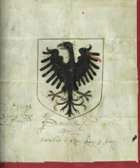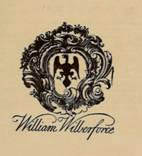A Coat of Arms first allowed men fighting in battles to be identified in by devices painted on their banners, shields & surcoats because facial identification was impossible when the head was completely covered by a war helmet. The Heralds of the English royal household were required to keep records both of the arms & of family descent. These were recorded in the Rolls of Arms as early as 1250. In 1484, King Richard III granted a charter of incorporation, which resulted in the various Heralds & their records being brought together within The College of Arms in London. In 1555, a second royal charter of incorporation was issued & the site of the present college building, in what is now Queen Victoria Street was granted to them it is presided over by the Duke of Norfolk as hereditary Marshall of Arms. Theoretically, the court can deny a family adopting arms if they are not entitled to them. Still each person who is granted arms as a gentleman or a member of the peerage must apply before the Court of Arms for a “grant.”
According to the Visitation of Yorkshire and signed by Roger Wilberfos in 1584 and by his son Robert in 1612, the family traces their origin back to a Philip de Kyme (Philippus Kyme) Lord of Wilberfoss whose daughter Margaret married Ilger Wilberfoss. He reportedly came from a village in the north of Durham County now called Eggleton and carried an Eagle as his heraldic device. He may even have used this device to identify himself during the famous battle of Stamford Bridge (Pons Belli) during which Harold defeated Tostig and King Harold Hardrada in 1066.This event is recorded by the Pocklington Rural District Council where their Civic Coat of Arms has two spears with bloodstained points.
In the 1584 Visitation by Robert Glover a copy of the Arms was recorded and signed by "Robert Glover alias Somersett, herald at Armes, Marshall and deputie to William flower, Esquier, alias Norroy, kinge of Armes and principall herald of the East West and North partes of ye realme of Englande from ye Trent Northwarde"
Roger would have signed a duplicate which was then kept by the Herald and deposited in the college of Arms in London. This was the earliest form of a census. Roger reported his family as far as he could remember and his children and grandchildren. It also allowed him to use his arms on official papers such as indentures or other legal documents. I have several of these documents with the eagle sealed by various members of the family.
The Motto; There was no motto in the earliest Coats of Arms. It is probable that William Wilberforce the Emancipator used “NOS NON-NOBIS”. It comes from psalm 113 (114) Another motto has also been used this time in about 1877 (Letter to Pope Pius 1X in 1877 from W.I.Wilberforce.) “NEMO SIBI” “If we live, we live for the Lord; and if we die, we die for the Lord”(Romans 14) “IN PORTU QUIES” There is rest in port Father W Gerard Wilberforce
|
||





